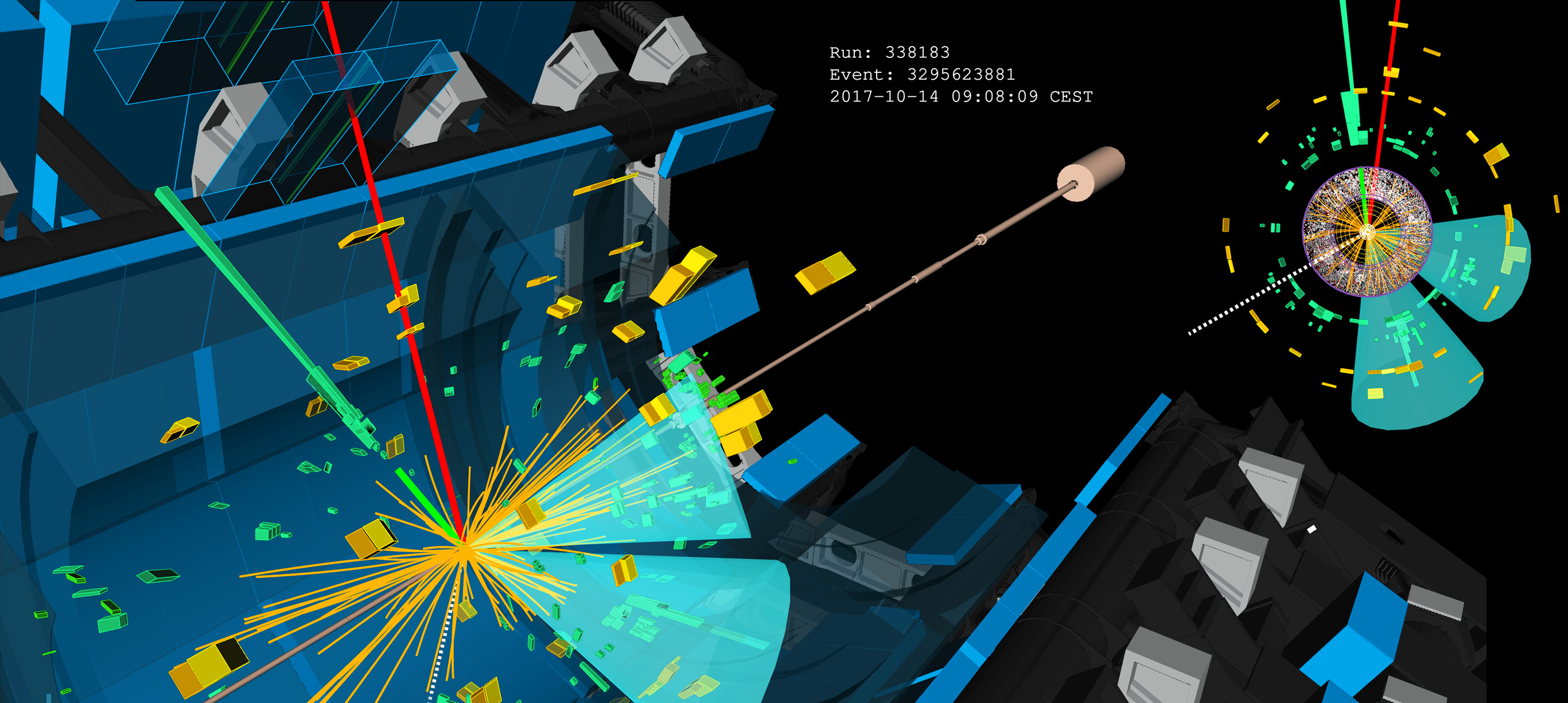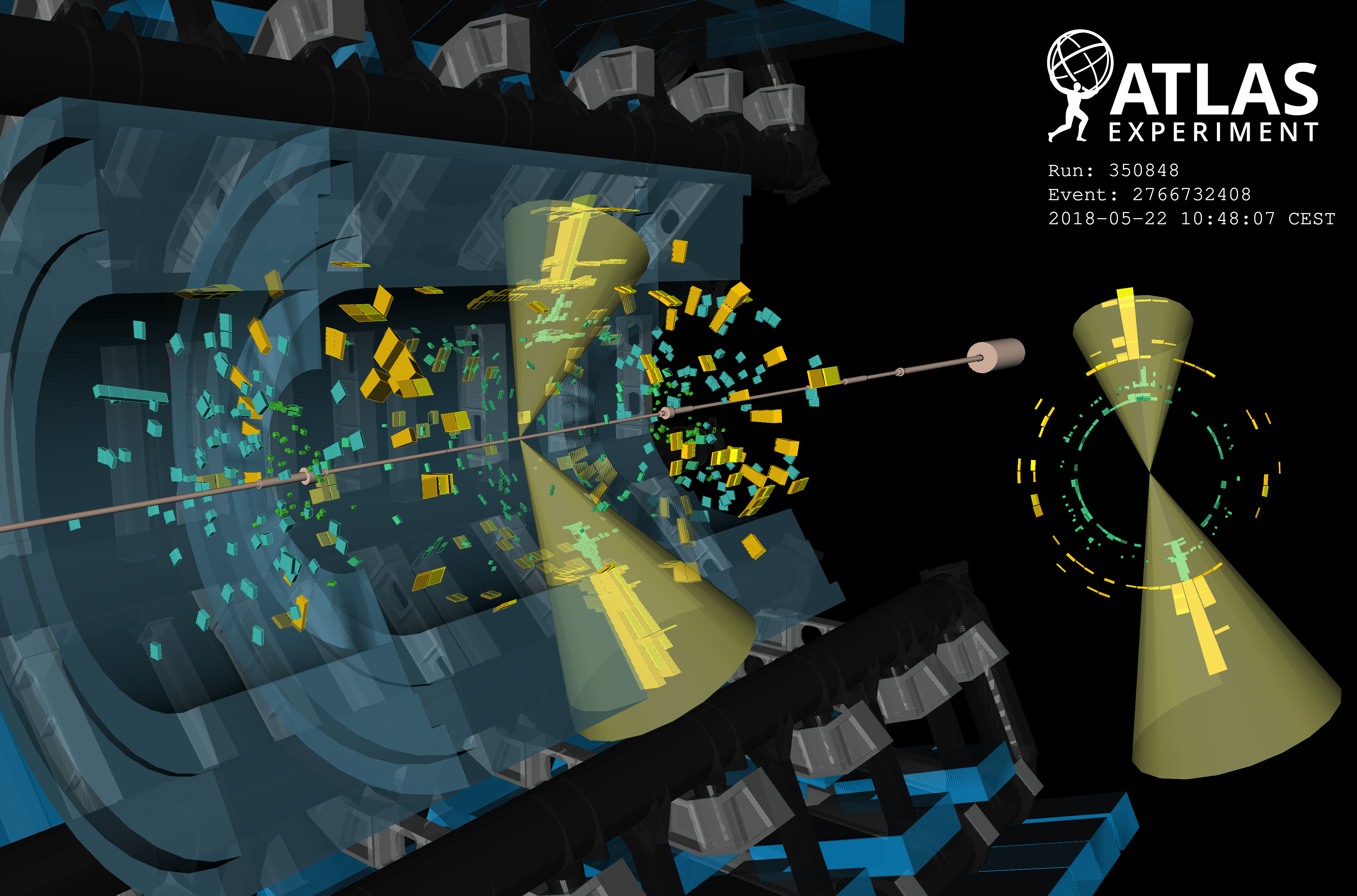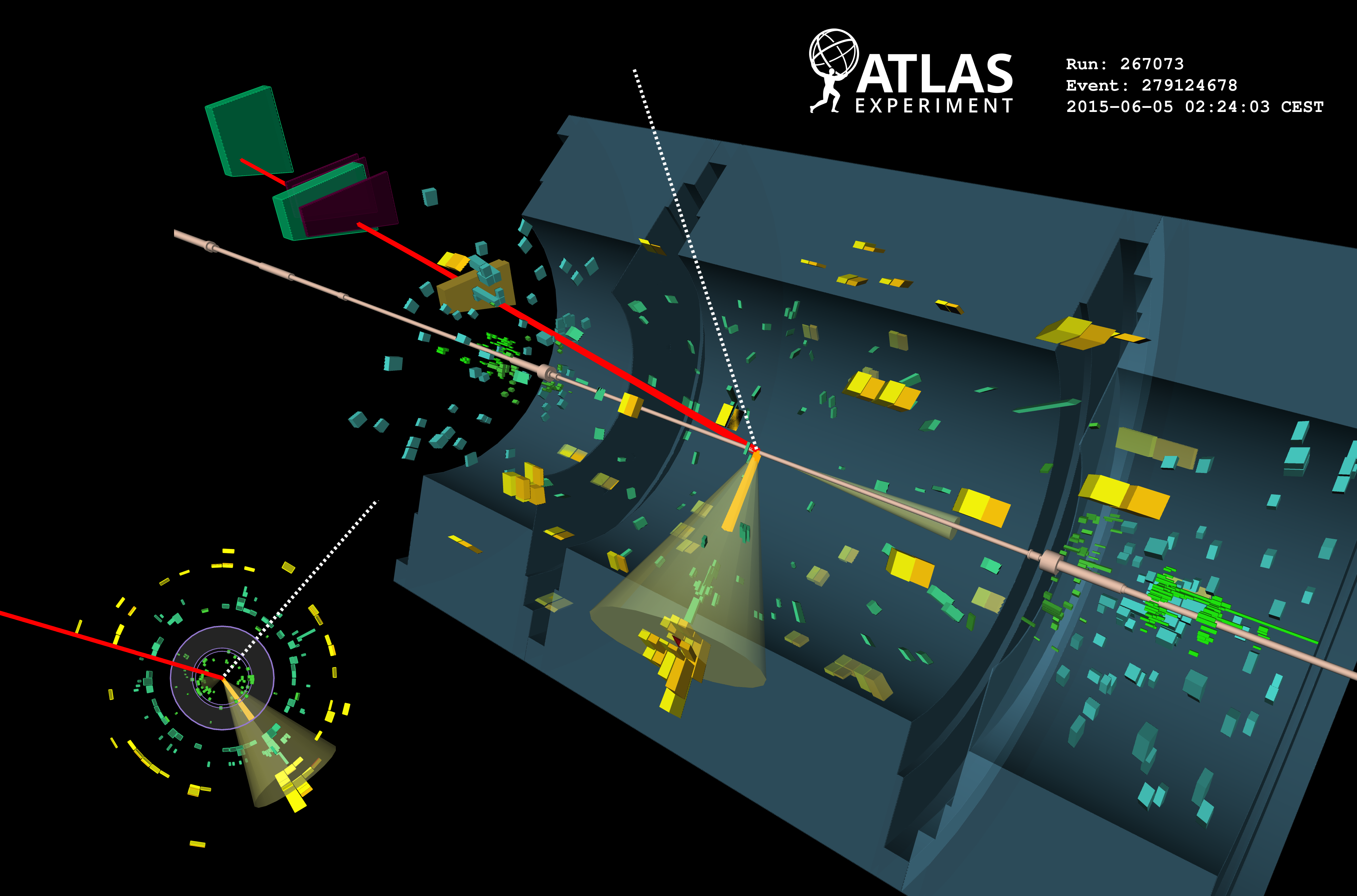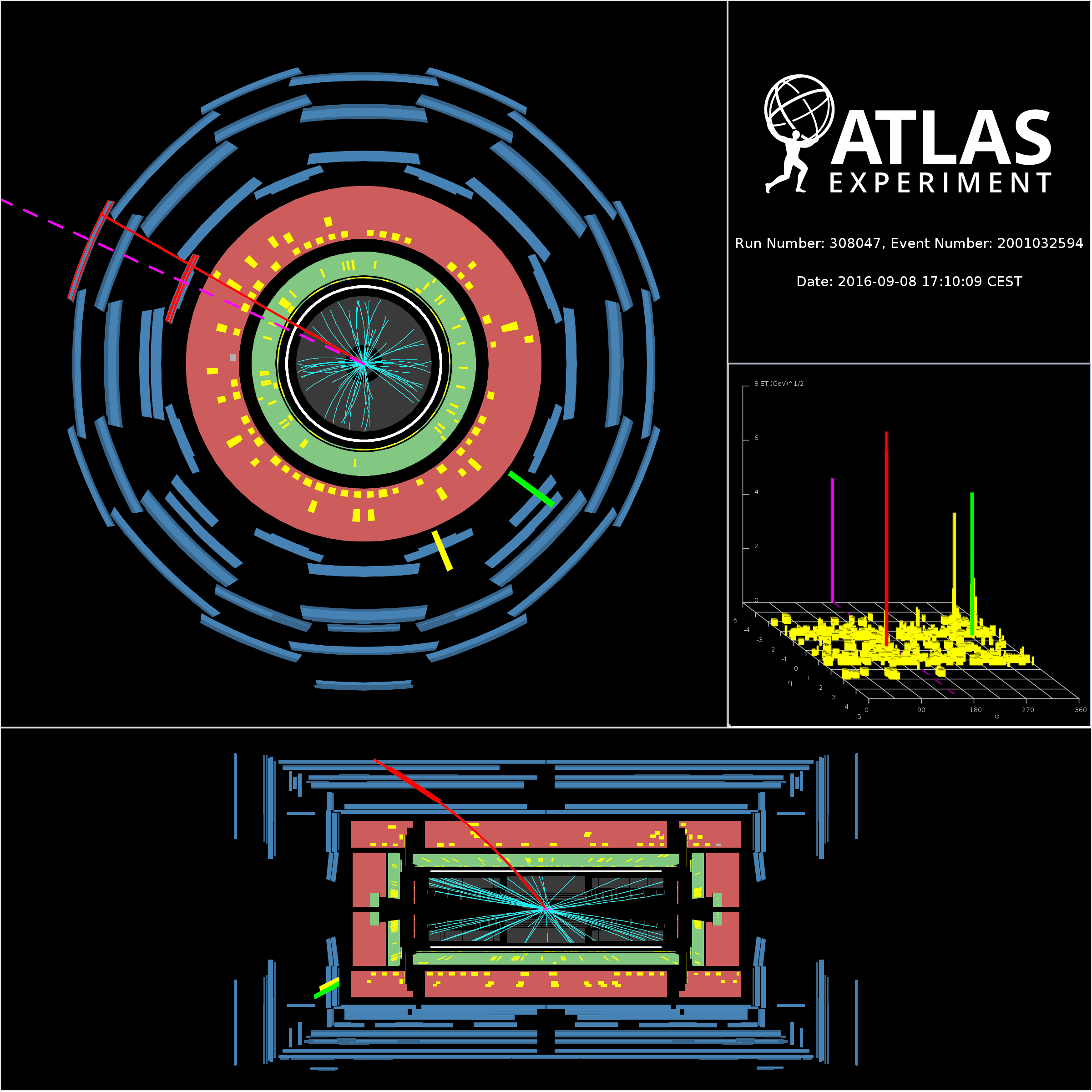Bound to be discovered? ATLAS explores top-quark interactions near threshold
7 July 2025 | By
The top quark is a bit of a loner. While other quarks can join together to form bound states called hadrons, the top quark’s extremely short lifetime means it decays almost instantly – disappearing before it can form a long-lasting bond.
But not all relationships have to last forever. Under certain conditions, physicists predict that a top quark and an anti-top quark could exchange gluons for a short time before decaying independently. This fleeting interaction, called a quasi-bound state, can only form when both top quarks are produced almost at rest (i.e. non-relativistically) and the collision energy is close to twice the top quark’s mass. This is the production threshold, and the mass of this quasi-bound state would be slightly below it.
For a long time, it was considered experimentally unfeasible to measure this subtle effect at the LHC, since events close to the production threshold make up only a small fraction of the top-pairs produced and are difficult to spot in the data. However, thanks to the wealth of proton-proton data recorded during Run 2 of the LHC and advances in analysis techniques, this long-held assumption is now being overturned.
The production threshold came under increased scrutiny in the ATLAS Collaboration’s recent, first-ever observation of quantum entanglement in top-pair events. In that result, physicists examined the angular patterns of the top-quark decay products, which can differ when the top-pair energy is close to the production threshold. Could these patterns be used to measure the quasi-bound top-pair state?
The new ATLAS result revealed an excess of events when compared to predictions that ignore the quasi-bound state

In a new result presented today at the European Physical Society Conference on High Energy Physics (EPS-HEP) in Marseille, ATLAS physicists measured how often top-quark pairs are produced near the production threshold. They examined the full LHC Run-2 dataset, looking for events with a low invariant mass in the top-pair system. Due to limited experimental resolution, a pseudo-bound state would not appear as a clear peak in the spectrum. To improve sensitivity, physicists divided the dataset into nine subsets (see Figure 1), based on the same angular information used to discover entanglement in top-pair events. Physicists also used new, sophisticated simulations that incorporate a more complete modelling of the non-relativistic effects of the strong force.
The new ATLAS result revealed an excess of events when compared to predictions that ignore the quasi-bound state. The model without non-relativistic effects was rejected with an observed significance of 7.7𝜎 and the cross section of the pseudo-bound state was measured to be 9.0 ± 1.3 pb, with the precision being dominated by the statistical uncertainty. A similar measurement was recently performed by the CMS Collaboration.
With the ongoing Run 3 of the LHC on track to deliver significantly more data, ATLAS physicists are set to deepen their exploration of the strong force in this special kinematic regime. Crucially, today’s measurement underscores the need for precise theoretical modeling of top-pair production, both at and above the production threshold, and reinforces the vital interplay between theory and experiment in precision studies. Continued improvements to these models will be essential to fully understand this intriguing corner of the Standard Model.
Learn more
- Observation of a cross-section enhancement near the tt production threshold in 13 TeV proton-proton collisions with the ATLAS detector (ATLAS-CONF-2025-008)
- EPS 2025 presentation by Fabio Cerutti: ATLAS Highlights
- EPS 2025 presentation by Haifeng Li: Measurements at the ttbar threshold with the ATLAS detector
- Observation of quantum entanglement in top-quark pairs using the ATLAS detector (Nature 633 (2024) 542, arXiv:2311.07288, see figures)
- CMS Collaboration: Observation of a pseudoscalar excess at the top quark pair production threshold (arXiv:2503.22382)
- Fuks, B., Hagiwara, K., Ma, K. et al. Simulating toponium formation signals at the LHC (Eur. Phys. J. C 85, 157 (2025), arXiv:2411.18962)
- ATLAS achieves highest-energy detection of quantum entanglement, ATLAS Physics Briefing, September 2023




